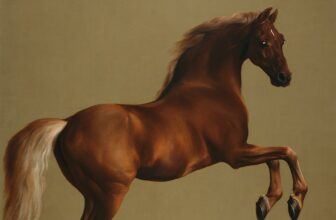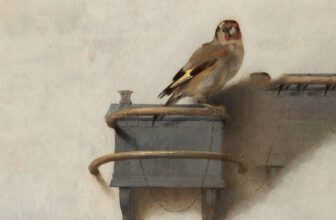
Meaning of Fishing Boats Key West Painting by Winslow Homer
A Glimpse into the Sea through Winslow Homer’s Eyes
Winslow Homer, often regarded as one of America’s most profound and influential artists of the 19th century, captured the spirit of nature and the grit of human perseverance in countless masterful works. Among his lesser-known yet poignant paintings is “Fishing Boats, Key West”, a watercolor that encapsulates not only a visual representation of a moment but also deeper themes related to labor, nature, and the fragility of life.
Painted during Homer’s later years, this piece combines his mature understanding of form, light, and color with his characteristic interest in the sea and those who live by it. In this post, we explore the origins, symbolism, and enduring meaning of Fishing Boats, Key West, peeling back the layers of brushstrokes to uncover the quiet drama and significance within.
Winslow Homer, the Painter of the Sea
To understand Fishing Boats, Key West, it is essential first to grasp who Winslow Homer was. Born in 1836 in Boston, Massachusetts, Homer began his artistic career as an illustrator, contributing to popular magazines like Harper’s Weekly. His early sketches of the Civil War were striking for their humanity and realism. However, it was in painting, especially watercolor and oil, that Homer found his true voice.
By the 1880s, Homer had moved away from the bustling art scenes of the northeast and retreated into the more remote, rugged areas of the American coast. His time in places like Maine, the Bahamas, and Florida saw him producing evocative images of fishermen, sailors, and everyday seafaring life. His works during this period, including Fishing Boats, Key West, reflect not only artistic maturity but a philosophical view of nature as both beautiful and indifferent.
The Creation of Fishing Boats, Key West: When and How It Was Painted
Fishing Boats, Key West was painted in 1903 during one of Homer’s travels to Florida. By this time, the artist was in his late 60s and had already secured his reputation as a master of maritime scenes. His journeys to Key West were part of a broader exploration of tropical and subtropical locales, which offered him new palettes, light conditions, and subjects.
The painting is a watercolor on paper, a medium Homer had come to favor for its immediacy and expressiveness. Watercolor suited Homer’s temperament, he was known to work quickly and intuitively, often painting en plein air (outdoors) to capture the fleeting qualities of sunlight and atmosphere. In Fishing Boats, Key West, we see Homer’s deft command of the medium in the loose yet controlled brushwork, the subtle gradients of the sky and sea, and the interplay of transparency and opacity.
The work likely came about as Homer observed the harbor of Key West, a bustling port city at the southern tip of Florida known for its vibrant marine industry. By situating his viewpoint on the waterline and choosing modest fishing vessels as his subject, Homer imbues the scene with immediacy and intimacy.
What’s Happening in the Painting?
At first glance, Fishing Boats, Key West may appear simple, just a few boats moored or drifting lazily on calm waters under a hazy sky. Yet this simplicity is deceptive.
In the foreground, a cluster of fishing boats occupies the still waters of the harbor. The hulls of the boats are rendered in muted browns and grays, softened by age and salt. Their sails are either furled or absent, indicating that the boats are at rest. Some figures, presumably fishermen, are visible, though minimally detailed. Homer deliberately keeps human figures small and subdued, allowing the boats and the water to dominate the composition.
The sky overhead is diffused with a pale, golden light. There is no storm, no crashing waves, just a meditative stillness. The water reflects the boats and sky, shimmering slightly as if stirred by a gentle breeze.
This is not a dramatic scene, but a moment suspended in time. The boats float, but their tether to the working lives of their owners is implicit. The quietness of the scene speaks volumes, it is a pause between labor, a lull before the next journey.
What Type of Art is Fishing Boats, Key West?
Fishing Boats, Key West is classified as a watercolor painting, part of the broader movement of American Realism. However, it straddles multiple categories: it is also an example of marine art, plein air painting, and arguably, an early precursor to American Impressionism.
While European Impressionists were interested in how light transformed the landscape, Homer brought his own American sensibility to the idea. He did not focus on fleeting beauty alone; he embedded real-world themes of survival, solitude, and labor into his landscapes.
Thus, Fishing Boats, Key West exists at the intersection of aesthetic beauty and social commentary. It offers a visual document of working-class life while simultaneously reveling in the painterly qualities of light, water, and form.
Themes and Representation: What Does the Painting Represent?
1. Labor and Livelihood
At its core, Fishing Boats, Key West is a tribute to the working lives of fishermen. The boats themselves are symbols of livelihood, sustenance, and perseverance. While the fishermen are not prominently featured, their presence is felt in the weathered surfaces of the boats, the gear stowed aboard, and the stillness of the water suggesting a momentary pause in a demanding routine.
2. Harmony with Nature
Unlike Homer’s more dramatic seascapes, which often show man at odds with the sea (as in The Gulf Stream), this painting illustrates a moment of harmony. The sea is calm, the boats are still, and nature is neither threatening nor yielding. This balance suggests a moment of peace in a larger, unpredictable cycle, a rare interlude of unity between man and nature.
3. Transience and Impermanence
Watercolor as a medium lends itself to the idea of transience. The light in Fishing Boats, Key West is ephemeral, the reflections fragile, the scene likely to shift in minutes. Homer captures this fleeting moment with humility, reminding viewers of the impermanence not just of the sea but of life itself.
4. American Identity
As part of Homer’s broader body of work, this painting contributes to the visual identity of America at the turn of the century. Unlike grand historical paintings or urban industrial scenes, Fishing Boats, Key West celebrates regional life, labor, and nature. It reflects an America built on quiet, persistent effort and deep connection to place.
Symbolism in Fishing Boats, Key West
Winslow Homer was not overtly allegorical in his approach, but his works are rich with subtle symbolism. In this painting, several symbolic readings emerge:
The Boats – Beyond their practical function, the boats can be seen as metaphors for the human soul: vessels navigating the uncertainties of life. Their moored state implies rest, safety, or perhaps a moment of reflection.
The Water – Water in Homer’s works often symbolizes change, danger, or transition. Here, its calmness may symbolize emotional stillness, introspection, or temporary relief from struggle.
Light and Atmosphere – The soft golden light may symbolize hope, renewal, or divine presence. It bathes the scene in warmth, suggesting optimism or tranquility.
The overall absence of drama also communicates something powerful, that life’s beauty often lies in its quietest, most unremarkable moments.
Where is Fishing Boats, Key West Today?
As of today, Fishing Boats, Key West is held in the collection of the Clark Art Institute in Williamstown, Massachusetts. The painting remains one of the more quietly revered pieces in the museum’s collection, cherished for its craftsmanship and meditative quality.
The Clark, known for its impressive holdings in American and European art, acquired this work as part of its ongoing commitment to preserving Homer’s legacy and highlighting the significance of American Realism. The painting is occasionally exhibited alongside other works by Homer and his contemporaries, allowing viewers to see how his style evolved and how deeply he engaged with the American landscape.
Contemporary Relevance
Though not as widely known as The Gulf Stream or Snap the Whip, Fishing Boats, Key West remains an important work in Homer’s oeuvre. It captures the quieter side of a master known for drama and intensity, showcasing his ability to convey profound meaning through simplicity.
In today’s world, where attention is often drawn to spectacle, Homer’s quiet painting invites viewers to slow down. It speaks to the timeless human condition, work, rest, connection to nature, and the cycles that govern our lives.
Its relevance extends to contemporary conversations about sustainability, local economies, and the dignity of labor. In an era increasingly dominated by digital abstraction and urban sprawl, Fishing Boats, Key West reminds us of the elemental relationship between people and their environment.
An Ode to the Ordinary, Made Extraordinary
Fishing Boats, Key West is more than a painting; it is a meditation. It does not dazzle with dramatic waves or bold colors but instead draws the viewer into a contemplative space. Winslow Homer, in his mature years, found beauty and meaning in the ordinary, in the boats bobbing on Florida’s waters, in the golden light of late afternoon, in the pause between journeys.
Through this work, Homer invites us not only to look but to see, to understand the quiet dignity of life at sea, the strength in subtlety, and the power of observation. It is a lesson in patience, in presence, and in the enduring resonance of simplicity.
In our fast-paced, overstimulated modern lives, Fishing Boats, Key West remains a serene harbor, a visual poem that continues to speak, more than a century after its creation.
Sources:
Clark Art Institute Collection Notes
“Winslow Homer: An American Vision” by Randall C. Griffin
“Winslow Homer Watercolors” by Helen A. Cooper, Yale University Press
National Gallery of Art, Washington – Winslow Homer Online Catalog
The Metropolitan Museum of Art: Winslow Homer Retrospective Archives




